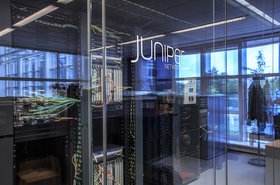Managing remote data center space and connectivity is crucial for those responsible for electronic trading infrastructure. Co-ordinating resources, procuring facilities, hardware selection, project management, system installation, testing and maintenance are complex.
Data center relocation is once again front of mind, with Euronext migrating its primary data center and related colocation services from Basildon in UK to the Aruba Global data center IT3 in Bergamo, Italy and the London Stock Exchange Group (LSEG) set to relocate its data center from its current London City location to a new London site.
Outsourcing versus going alone
Trading organizations looking to co-locate in the new data centers need to seriously consider if they have the skills, understanding, resources and bandwidth to make a move themselves. For most, the answer will be ‘no’. They will outsource operations to a managed hosting, colocation and connectivity service provider. Such providers have already spent several months researching and planning seamless moves. Working with an expert provider that knows the local rules and regulations and exchange connections can allow you to experience uninterrupted, seamless trading from day one of a data center switch over.
There are clear cost and operational benefits working with a trading support and data center specialist. Outsourced providers give access to a suite of services including order routing, market data and the procurement, installation and management of trading infrastructure links. They can make the process of moving location less stressful and more efficient, with a single point of contact and 24-hour access to technical expertise.
Cost amortization is another plus of the outsourced model. Many companies offer the option to lease hardware rather than paying upfront, this can help smaller companies to manage their cash flow. Working with a global provider allows clients to benefit from economies of scale, making a managed market data solution not only less complex than do-it-yourself models but a more cost-effective approach too. As exchange connectivity requirements evolve into a labyrinth of paperwork, pricing, physical connectivity options and market data nuances, partnering helps to cut through the administrative burden and costs. Traders can leverage a single source relationship to obtain the multiple feeds they need direct from the exchanges.
Does low latency matter?
Low latency for algorithmic trading is vital. Among many factors that affect latency, hardware location and network connections are key to successfully achieving the lowest latency possible. Trade execution speed is extremely important for profit and loss, and competitive advantage comes from having the best communication links to hardware in the best location.
Ultra-low latency Layer 1 technology inside the data center firms to access execution speeds that are up to 10 times faster than traditional layer 3 architectures. It remains an advanced solution available on a global basis, eradicating the need for multiple switches by using a simple, single hop architecture to deliver connectivity in as little as 5 to 85 nanoseconds and will be available to customers that locate to the new data centers.
In my experience there are firms that are very latency sensitive and those that are less so. Our Layer 1 solution is a key differentiator for those with latency driven strategies, whereas a layer 3 standard latency offering can be right for others.
Future proof
Trading firms need to future proof by working with a company with extensive experience in managing multicast market data and able to provide scalable solutions to accommodate ever-expanding bandwidth requirements. As traders diversify their portfolios their market data needs can place excessive network capacity pressures on their infrastructure, sometimes running into tens of gigabits. Seek a provider that can easily accommodate these requirements and handle any bursts as a result of high activity periods such as those seen on many occasions recently due to market volatility caused by the coronavirus pandemic.





